Characterization and Analysis of Micromechanical Properties on DNTF and CL-20 Explosive Crystals
Abstract
:1. Introduction
2. Materials and Methods
2.1. Materials
2.2. Methods
3. Results and Discussion
3.1. Indentation Curve of Crystalline Material
3.2. Crystalline Elastic Modulus and Hardness
3.3. Crystalline Elastic Property
3.4. Fracture Toughness Property
3.5. Crystal Mechanics and Crystal Sensitivity
4. Conclusions
Author Contributions
Funding
Institutional Review Board Statement
Informed Consent Statement
Data Availability Statement
Conflicts of Interest
References
- Muravyev, V.; Meerov, D.B.; Monogarov, K.A.; Melnikov, I.N.; Kosareva, E.K.; Fershtat, L.L.; Sheremetev, A.B.; Dalinger, I.L.; Fomenkov, I.V.; Pivkina, A.N. Sensitivity of Energetic Materials: Evidence of Thermodynamic Factor on a Large Array of CHNOFCl Compounds. Chem. Eng. J. 2021, 421, 129804. [Google Scholar] [CrossRef]
- Li, Y.; Kong, J.-X.; Guo, W.-C. Current state and development trends of nano-indentation technology. Mech. Sci. Technol. Aerosp. Eng. 2017, 36, 469–474. [Google Scholar] [CrossRef] [Green Version]
- Gong, J.-H. Theoretical foundation and data analyses of quasi-static nanoindentation. J. Ceram. 2021, 42, 181–245. [Google Scholar]
- Liu, Y.; Chen, D.-F. Measurement of material mechanical properties using nanoindentation and finite element simulation. J. Wuhan Univ. Technol. Transp. Sci. Eng. 2003, 27, 690–693. [Google Scholar]
- Ruestes, C.J.; Alhafez, I.A.; Urbassek, H.M. Atomistic Studies of Nanoindentation—A Review of Recent Advances. Crystals 2017, 7, 293. [Google Scholar] [CrossRef] [Green Version]
- Milman, Y.V.; Chugunova, S.I.; Goncharova, I.V. Plasticity Characteristic Obtained by Indentation Technique for Crystalline and Noncrystalline Materials in the Wide Temperature Range. High Temp. Mater. Process. 2006, 25, 39–46. [Google Scholar] [CrossRef]
- Poitrimolt, M.; Cheikh, M.; Bernhart, G.; Velay, V. Characterisation of the transverse mechanical properties of carbon/carbon composites by spherical indentation. Carbon 2014, 66, 234–245. [Google Scholar] [CrossRef] [Green Version]
- Dong, H.E.; Zhu, J.C.; Lai, Z.H.; Yong, L.I.U.; Yang, X.W.; Nong, Z.S. Residual elastic stress-strain field and geometrically necessary dislocation density distribution around Nano-indentation in TA15 titanium alloy. Trans. Nonferrous Met. Soc. China 2013, 23, 7–13. [Google Scholar]
- Iost, A.; Bigot, R. Indentation size effect: Reality or artifact. Mater. Sci. 1996, 31, 3573–3577. [Google Scholar] [CrossRef]
- Shi, M.X.; Huang, Y.; Hwang, K.C. Fracture in a higher order elastic continuum. Mech. Phys. Solids 2000, 48, 2513–2538. [Google Scholar] [CrossRef]
- Gerberich, W.W. Nanoindentation methods in interfacial fracture testing, Chapter 13. In Comprehensive Structural Integrity; Elsevier Ltd.: New York, NY, USA, 2003; pp. 453–494. [Google Scholar]
- Swadener, J.G.; George, E.P.; Pharr, G.M. The correlation of the indentation size effect measured with indenter of various shapes. Mech. Phys. Solids 2002, 50, 681–694. [Google Scholar] [CrossRef]
- Ramos, K.J.; Bahr, D.F. Mechanical behavior assessment of sucrose using nanoindentation. J. Mater. Res. 2007, 22, 2037–2045. [Google Scholar] [CrossRef]
- Ramos, K.J.; Hooks, D.E.; Bahr, D.F. Direct observation of plasticity and quantitative hardness measurements in single crystal cyclotrimethylene trinitramine by nanoindentation. Philos. Mag. 2009, 89, 2381–2402. [Google Scholar] [CrossRef]
- Hudson, R.J.; Zioupos, P.; Gill, P.P. Investigating the Mechanical Properties of RDX Crystals Using Nano-Indentation. Propellants Explos. Pyrotech. 2012, 37, 191–197. [Google Scholar] [CrossRef]
- Mathew, N.; Sewell, T.D. Nanoindentation of the Triclinic Molecular Crystal 1,3,5-Triamino-2,4,6-Trinitrobenzene: A Molecular Dynamics Study. J. Phys. Chem. C 2016, 120, 8266–8277. [Google Scholar] [CrossRef]
- Taw, M.R.; Yeager, J.D.; Hooks, D.E.; Carvajal, T.M.; Bahr, D.F. The mechanical properties of as-grown noncubic organic molecular crystals assessed by nanoindentation. J. Mater. Res. 2017, 32, 2728–2737. [Google Scholar] [CrossRef]
- Zhai, M.; McKenna, G.B. Mechanical properties of pentaerythritol tetranitrate(PETN) single crystals from nano-indentation: Depth dependent response at the nano meter scale. Cryst. Res. Technol. 2016, 51, 414–427. [Google Scholar] [CrossRef]
- Li, M.; Chen, T.; Pang, H.; Huang, M. Ruptures and mesoscale fracture behaviors of RDX crystals. Chin. J. Energetic Mater. 2013, 21, 200–204. [Google Scholar]
- Li, M.; Tan, W.-J.; Kang, B.; Xu, R.-J.; Tang, W. The Elastic Modulus of b-HMX Crystals Determined by Nanoindentation. Propellants Explos. Pyrotech. 2010, 35, 379–383. [Google Scholar] [CrossRef]
- Zhu, Y.J.; Tu, J.; Chang, H.; Su, P.F.; Chen, Z.Q.; Xu, M. Comparative study on micromechanical properties of DNAN and TNT crystals by nanoindentation. Chin. J. Explos. Propellants 2017, 40, 68–71, 84. [Google Scholar]
- Zhu, Y.; Zhou, W.; Qu, C.; Li, X.; Xu, M.; Wang, M. Research on micromechanical properties of HATO and RDX crystals. Initiat. Pyrotech. 2021, 000, 41–44. [Google Scholar]
- Kosareva, E.K.; Gainutdinov, R.V.; Michalchuk, A.A.; Ananyev, I.V.; Muravyev, N.V. Mechanical stimulation of energetic materials at the nanoscale. Phys. Chem. Chem. Phys. PCCP 2022, 24, 8890–8900. [Google Scholar] [CrossRef]
- Aravindu, P.; Rani, K.D.; Shaik, A.M.; Kommu, N.; Rao, V.K. Synthesis of Novel Hexaazaisowurtzitane Cages to Access CL-20. Asian J. Org. Chem. 2022, 11, e202100680. [Google Scholar] [CrossRef]
- Wen, M.P.; Xu, R.; Zhang, H.B.; Sun, J.; Yan, X.L.; Chi, Y. Modulus and hardness of TNT single crystal (100) plane by a nano indenter. Chin. J. Energetic Mater. 2014, 22, 430–432. [Google Scholar]
- Wen, M.P.; Fu, T.; Tang, M.F.; Tan, K.Y.; Xu, R.; Chen, T.N. Linear correlation between micro-plastic properties of TNT, RDX and HMX explosives crystals and their corresponding impact sensitivities. Chin. J. Energetic Mater. 2020, 28, 1102–1108. [Google Scholar]
- Bao, Y.; Wang, W.; Zhou, Y. Investigation of the relationship between elastic modulus and hardness based on depth-sensing indentation measurements. Acta Mater. 2004, 52, 5397–5404. [Google Scholar] [CrossRef]
- Milman, Y.V. Plasticity characteristic obtained by indentation. J. Phys. D Appl. Phys. 2011, 41, 074013. [Google Scholar] [CrossRef]
- Chen, C.-Y.; Li, B.-H.; Li, K.; Gao, L.L.; Wang, X.F.; Nan, H.; Ning, D. Relationship between ignition characteristics and mechanical properties of PBX under impact loading. Chin. J. Explos. Propellants 2018, 41, 369–374. [Google Scholar]
- Zhang, C.; Zhang, K.; Zhang, J.-X. Research progress of CL-20 desensitization process. Shanxi Chem. Ind. 2021, 41, 35–38. [Google Scholar]
- Hang, G.Y.; Yu, W.L.; Wang, T. Preparation and performance test of CL-20/RDX cocrystal explosive. Chin. J. Explos. Propellants 2021, 44, 484–488. [Google Scholar]
- Gao, J.; Wang, H.; Luo, Y.M.; Wang, H.X.; Wang, W. Study on binary phase diagram of DNAN/DNTF mixed system and its mechanical sensitivity. Chin. J. Explos. Propellants 2020, 43, 213–218, 224. [Google Scholar]

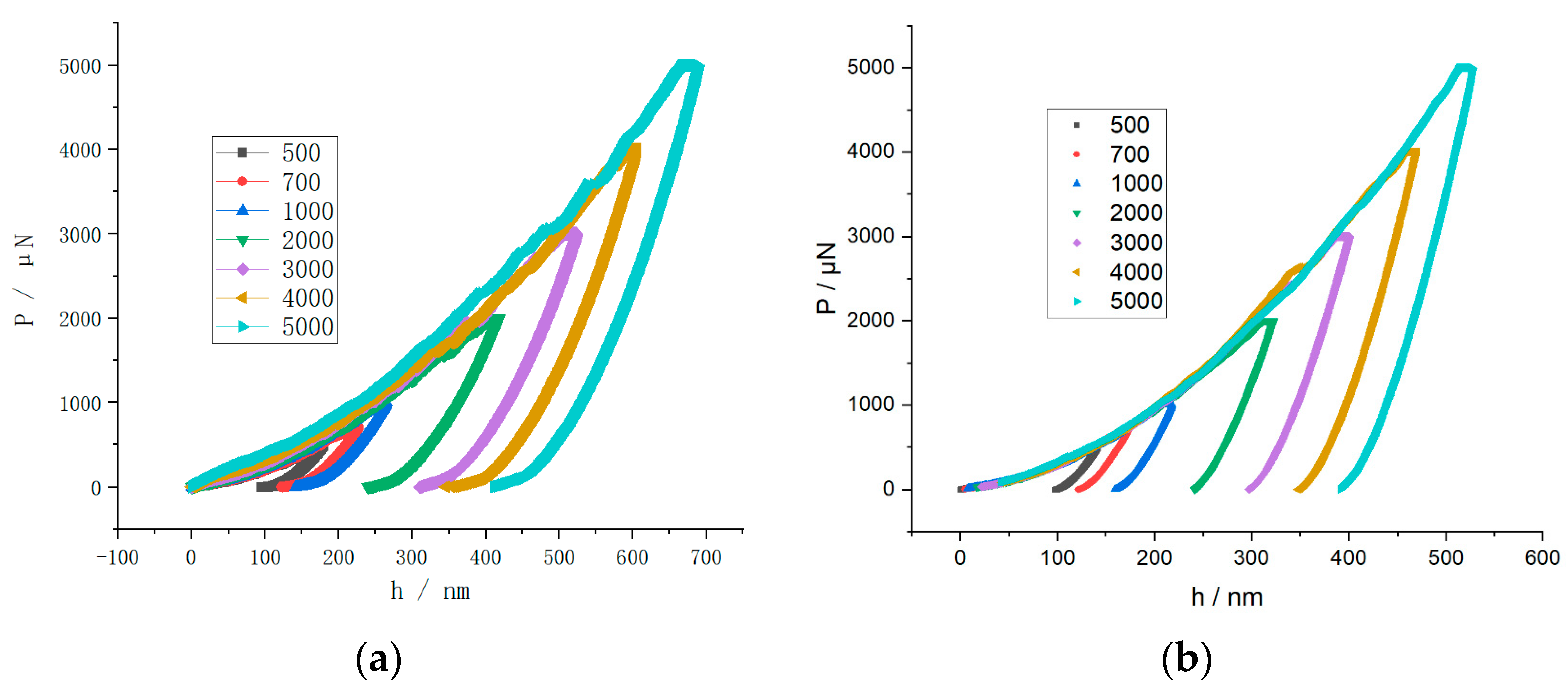
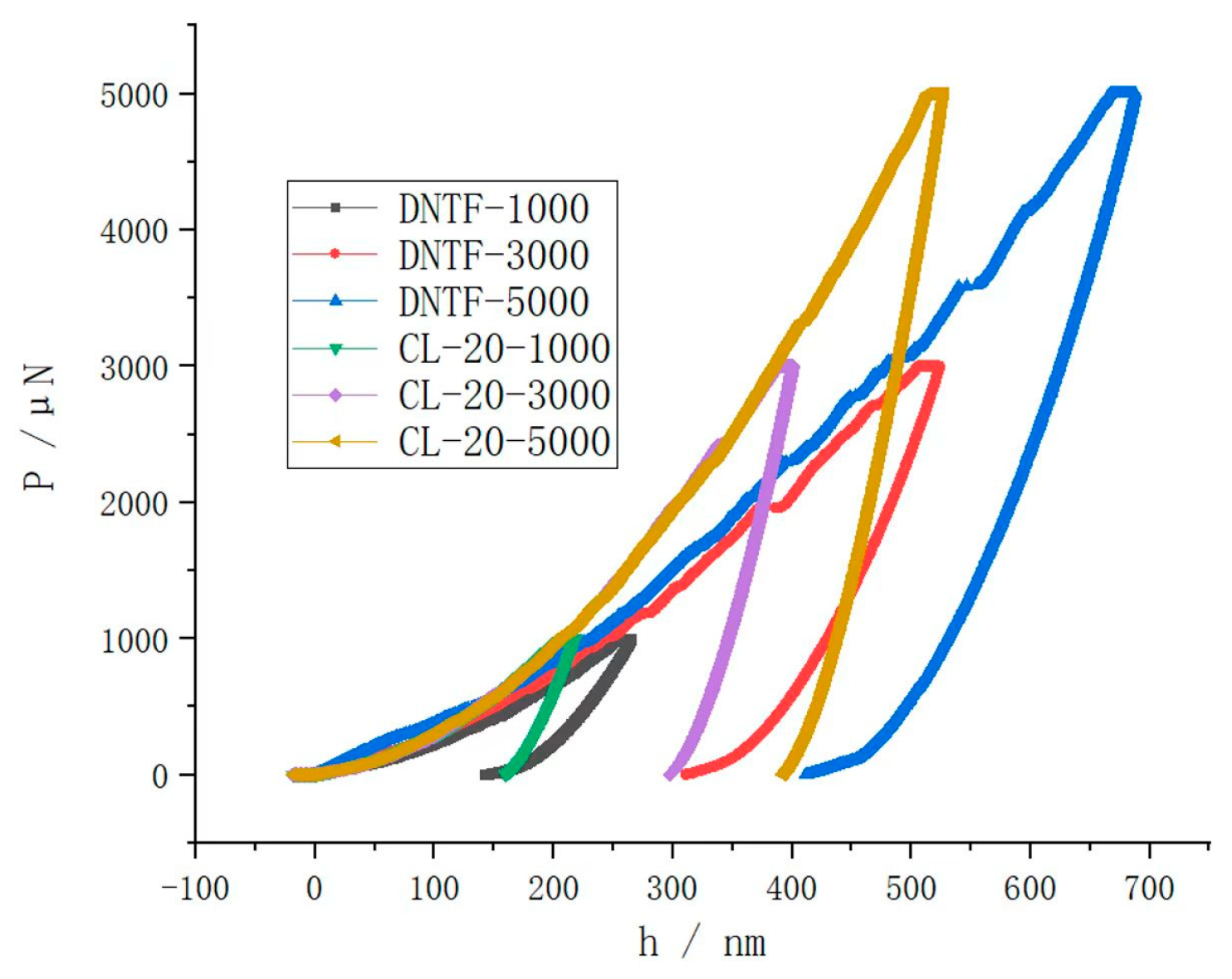
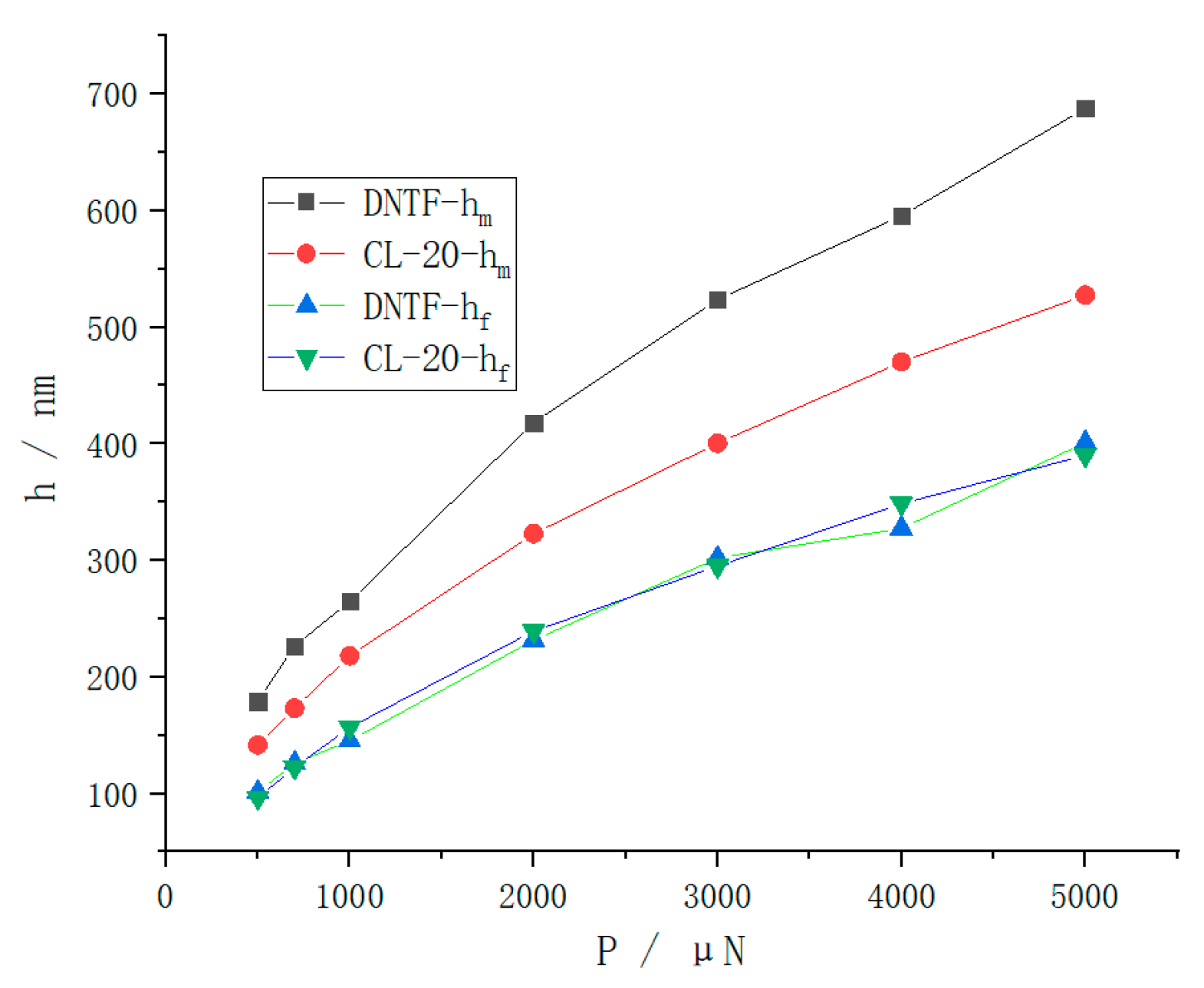

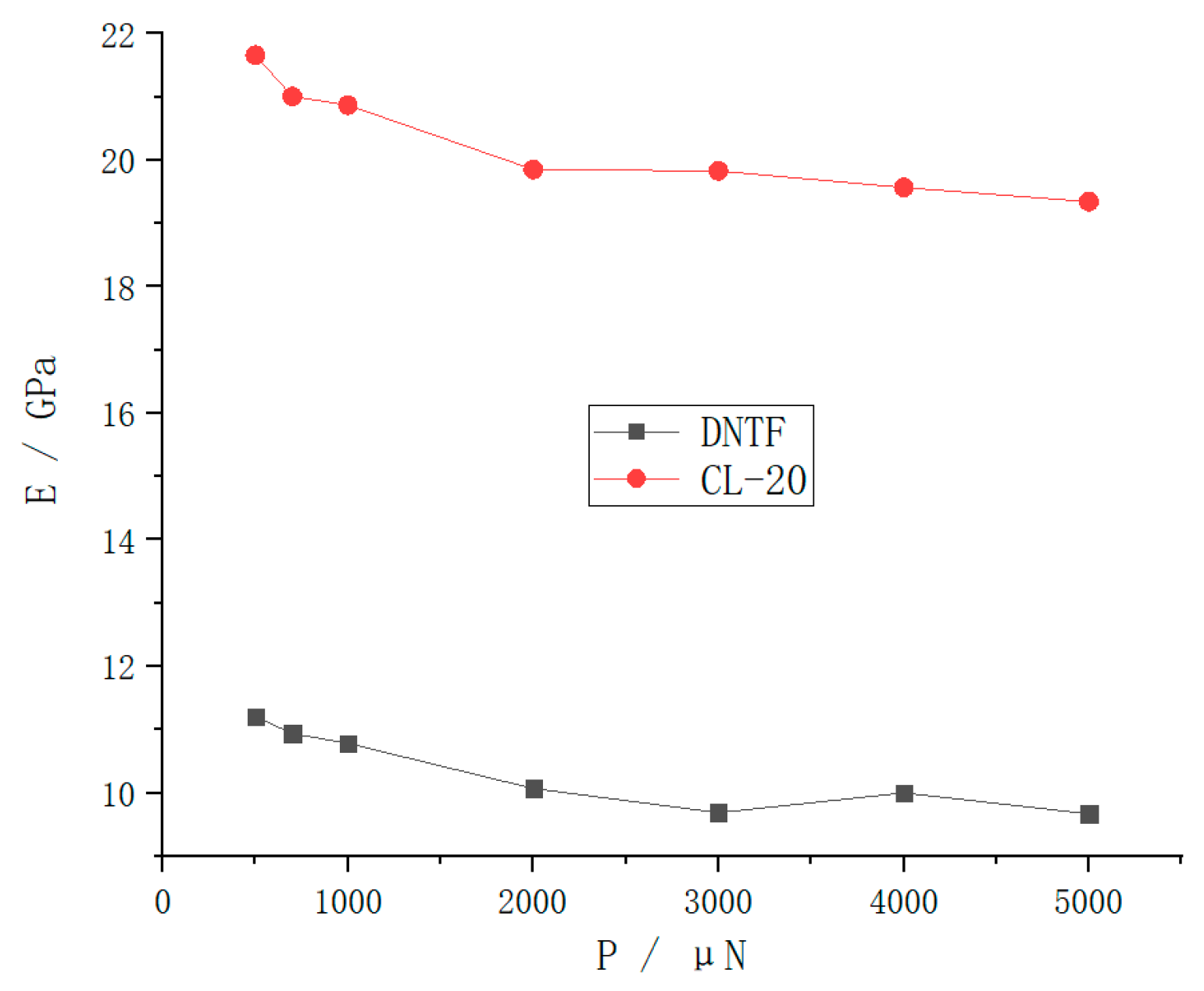
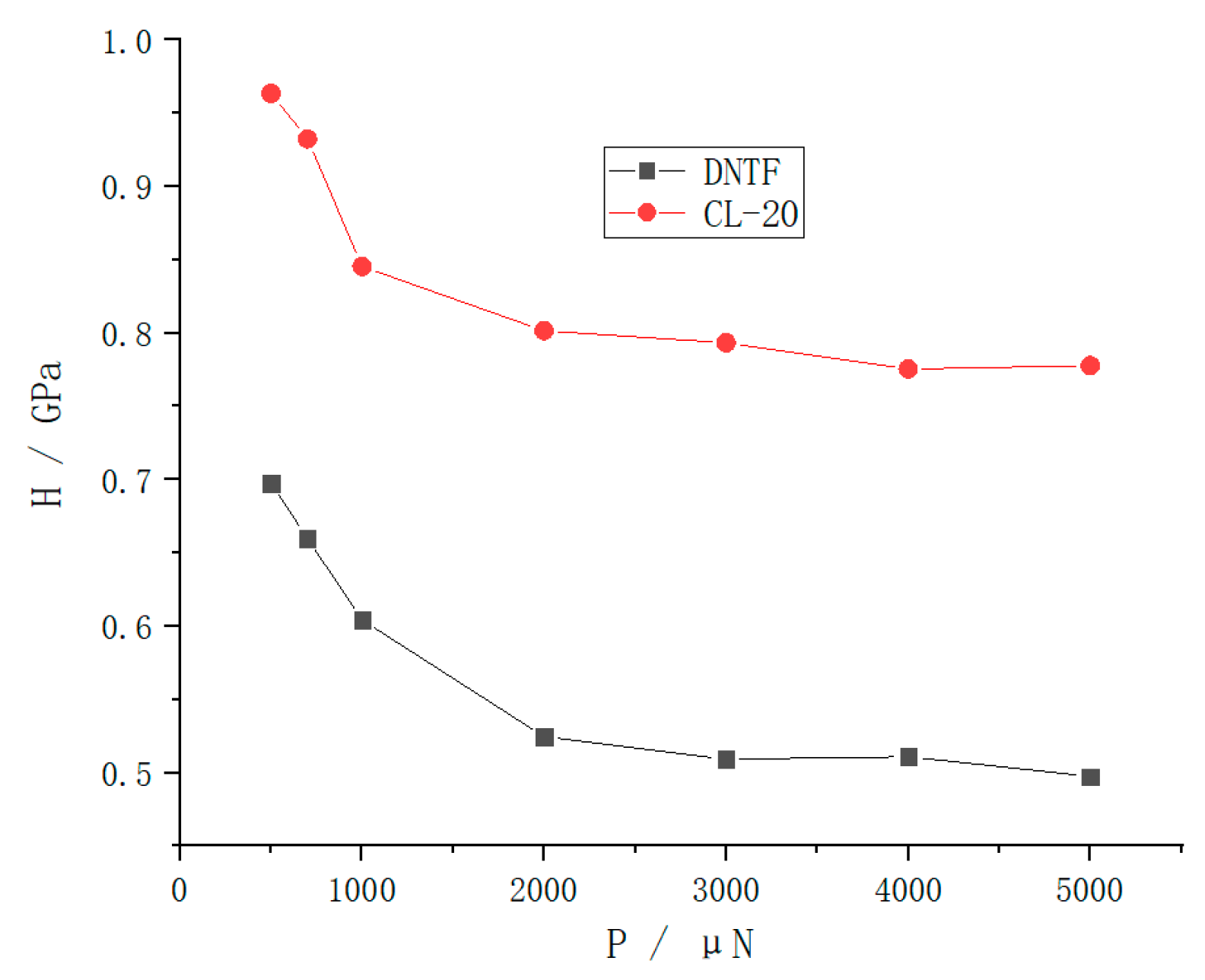
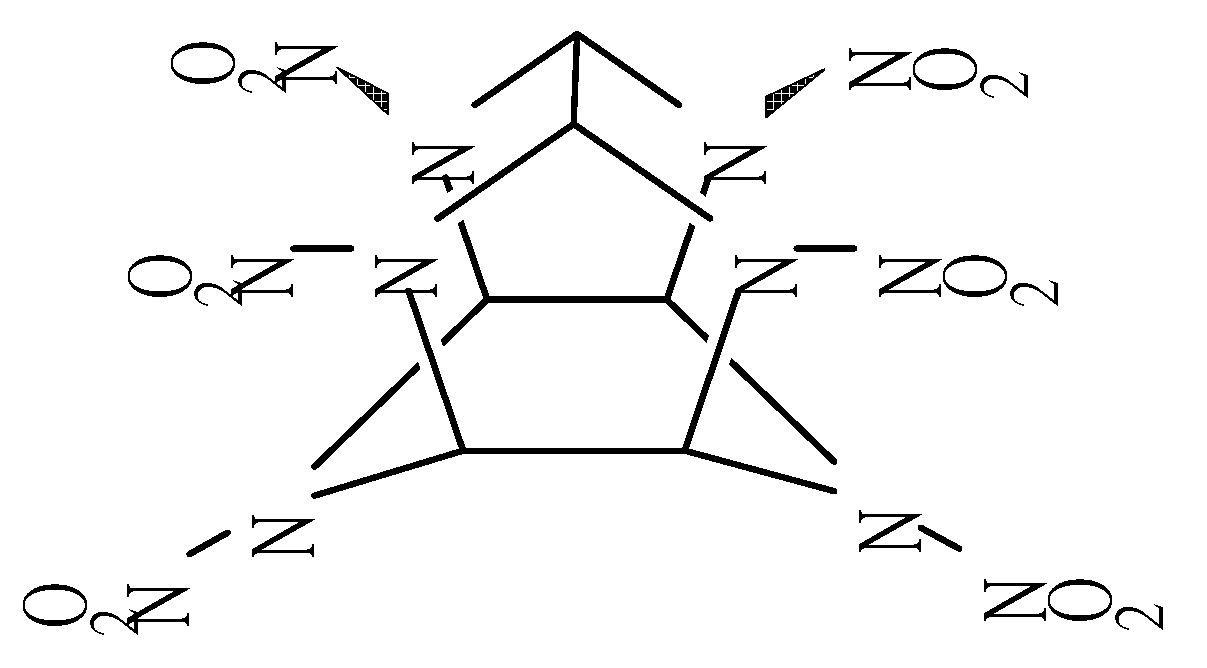

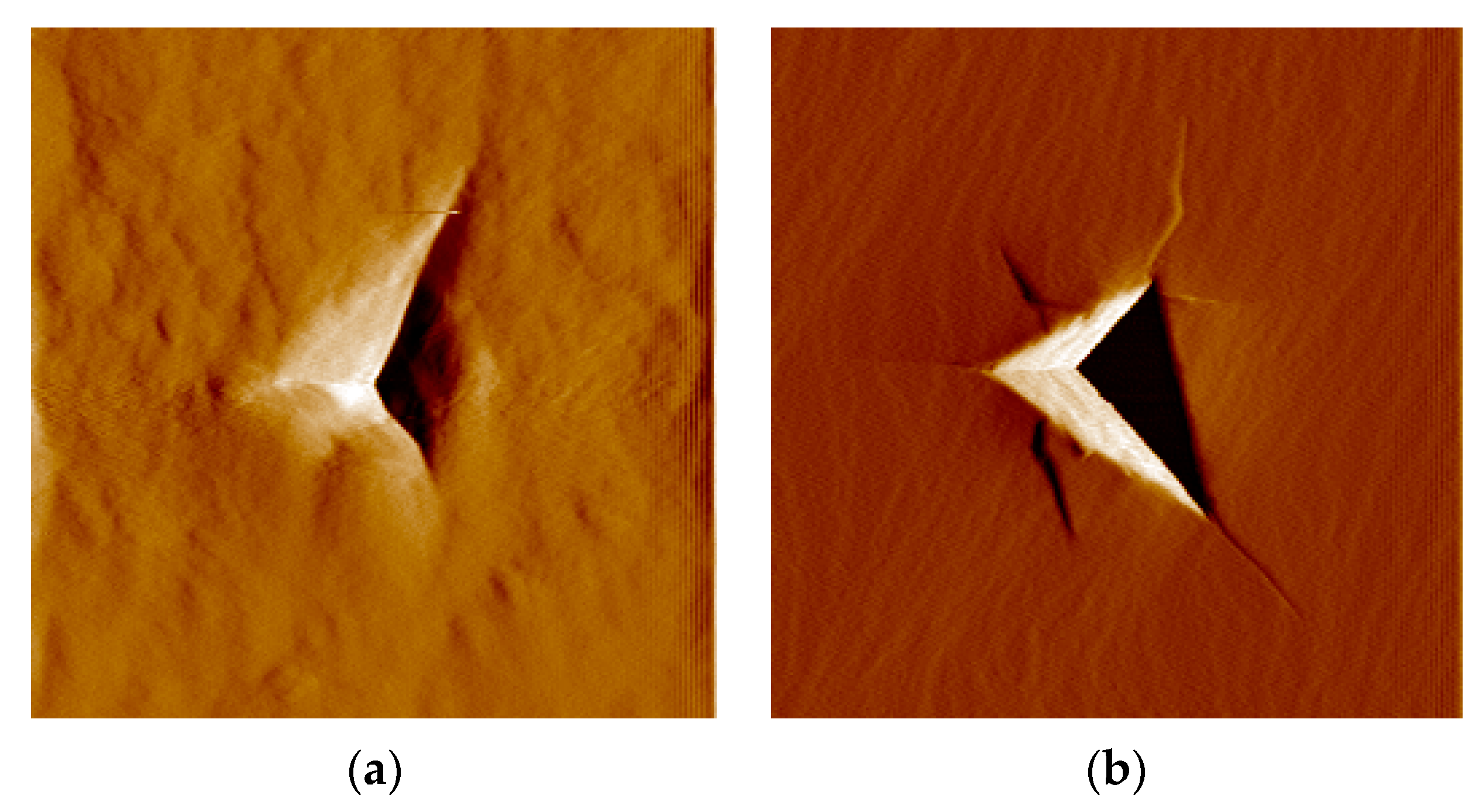
| Pmax/μN | 500 | 700 | 1000 | 2000 | 3000 | 4000 | 5000 | |
|---|---|---|---|---|---|---|---|---|
| DNTF | At × 10−10/J | 0.38 | 0.67 | 1.1 | 3.52 | 6.65 | 9.95 | 14.32 |
| Ae × 10−10/J | 0.15 | 0.24 | 0.43 | 1.2 | 2.21 | 3.45 | 4.72 | |
| δA | 0.61 | 0.64 | 0.61 | 0.66 | 0.67 | 0.65 | 0.67 | |
| CL-20 | At × 10−10/J | 0.31 | 0.49 | 0.89 | 2.55 | 4.67 | 7.41 | 9.95 |
| Ae × 10−10/J | 0.09 | 0.14 | 0.24 | 0.67 | 1.25 | 1.94 | 2.67 | |
| δA | 0.71 | 0.7 | 0.73 | 0.74 | 0.73 | 0.74 | 0.73 | |
| Pmax/μN | DNTF | CL-20 | ||
|---|---|---|---|---|
| L/μm | KIC/MPa | L/μm | KIC/MPa | |
| 3000 | -- | -- | 1.89 | 92.36 |
| 4000 | 2.63 | 114.37 | 2.42 | 85.22 |
| 5000 | 3.25 | 114.80 | 3.37 | 64.50 |
Disclaimer/Publisher’s Note: The statements, opinions and data contained in all publications are solely those of the individual author(s) and contributor(s) and not of MDPI and/or the editor(s). MDPI and/or the editor(s) disclaim responsibility for any injury to people or property resulting from any ideas, methods, instructions or products referred to in the content. |
© 2022 by the authors. Licensee MDPI, Basel, Switzerland. This article is an open access article distributed under the terms and conditions of the Creative Commons Attribution (CC BY) license (https://creativecommons.org/licenses/by/4.0/).
Share and Cite
Nan, H.; Zhu, Y.; Niu, G.; Wang, X.; Sun, P.; Jiang, F.; Bu, Y. Characterization and Analysis of Micromechanical Properties on DNTF and CL-20 Explosive Crystals. Crystals 2023, 13, 35. https://doi.org/10.3390/cryst13010035
Nan H, Zhu Y, Niu G, Wang X, Sun P, Jiang F, Bu Y. Characterization and Analysis of Micromechanical Properties on DNTF and CL-20 Explosive Crystals. Crystals. 2023; 13(1):35. https://doi.org/10.3390/cryst13010035
Chicago/Turabian StyleNan, Hai, Yiju Zhu, Guotao Niu, Xuanjun Wang, Peipei Sun, Fan Jiang, and Yufan Bu. 2023. "Characterization and Analysis of Micromechanical Properties on DNTF and CL-20 Explosive Crystals" Crystals 13, no. 1: 35. https://doi.org/10.3390/cryst13010035






